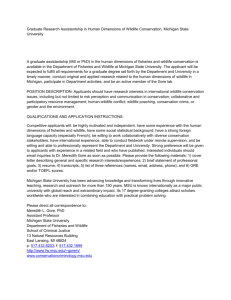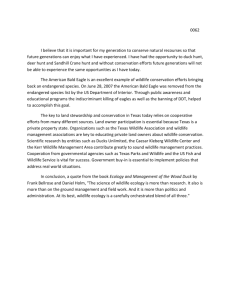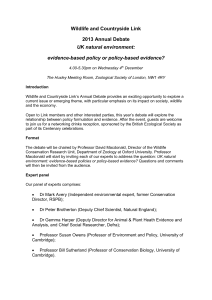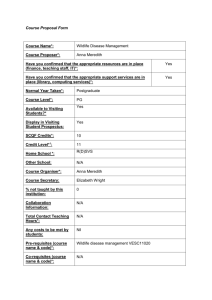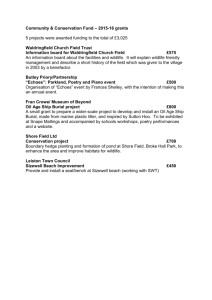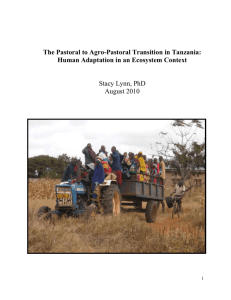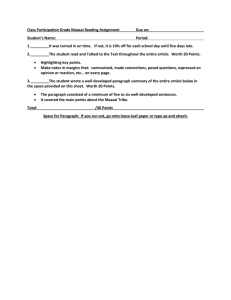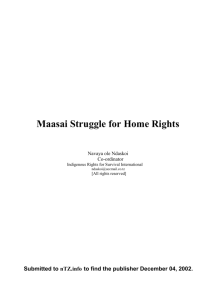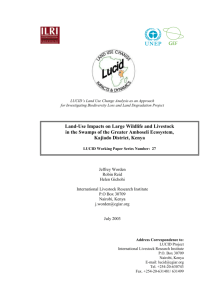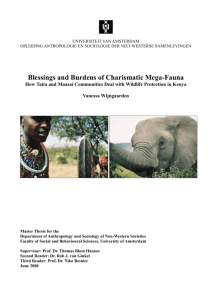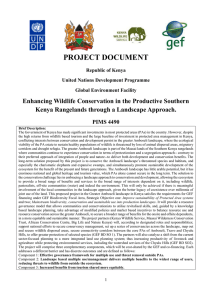Read the report from Dr. Arati Iyengar
advertisement
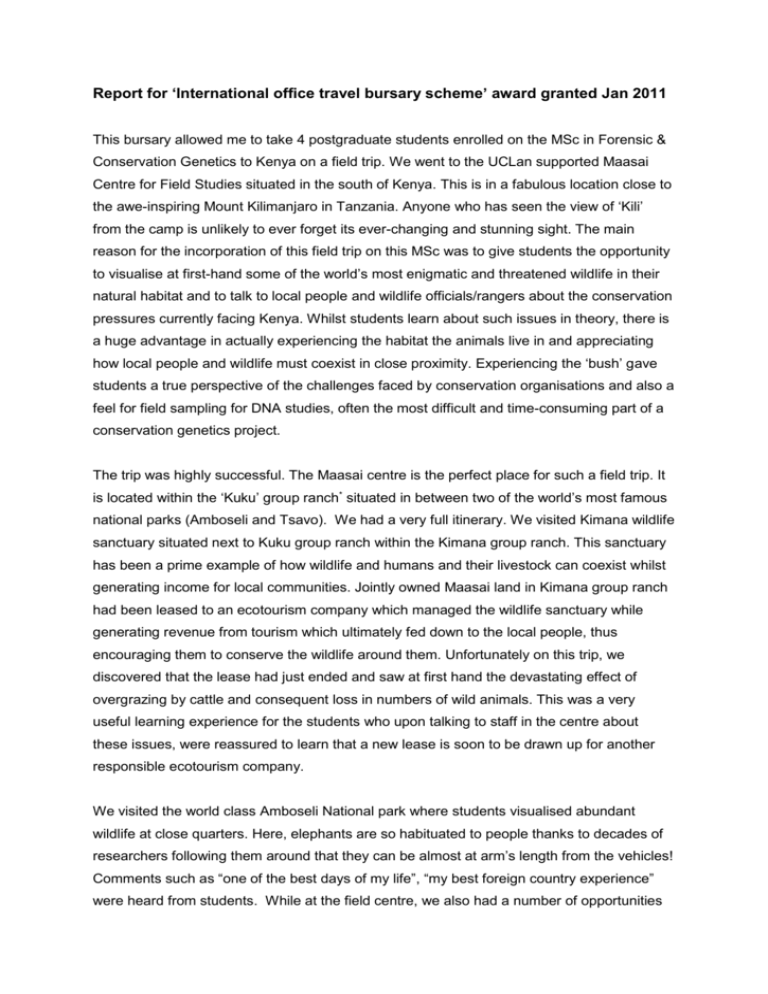
Report for ‘International office travel bursary scheme’ award granted Jan 2011 This bursary allowed me to take 4 postgraduate students enrolled on the MSc in Forensic & Conservation Genetics to Kenya on a field trip. We went to the UCLan supported Maasai Centre for Field Studies situated in the south of Kenya. This is in a fabulous location close to the awe-inspiring Mount Kilimanjaro in Tanzania. Anyone who has seen the view of ‘Kili’ from the camp is unlikely to ever forget its ever-changing and stunning sight. The main reason for the incorporation of this field trip on this MSc was to give students the opportunity to visualise at first-hand some of the world’s most enigmatic and threatened wildlife in their natural habitat and to talk to local people and wildlife officials/rangers about the conservation pressures currently facing Kenya. Whilst students learn about such issues in theory, there is a huge advantage in actually experiencing the habitat the animals live in and appreciating how local people and wildlife must coexist in close proximity. Experiencing the ‘bush’ gave students a true perspective of the challenges faced by conservation organisations and also a feel for field sampling for DNA studies, often the most difficult and time-consuming part of a conservation genetics project. The trip was highly successful. The Maasai centre is the perfect place for such a field trip. It is located within the ‘Kuku’ group ranch* situated in between two of the world’s most famous national parks (Amboseli and Tsavo). We had a very full itinerary. We visited Kimana wildlife sanctuary situated next to Kuku group ranch within the Kimana group ranch. This sanctuary has been a prime example of how wildlife and humans and their livestock can coexist whilst generating income for local communities. Jointly owned Maasai land in Kimana group ranch had been leased to an ecotourism company which managed the wildlife sanctuary while generating revenue from tourism which ultimately fed down to the local people, thus encouraging them to conserve the wildlife around them. Unfortunately on this trip, we discovered that the lease had just ended and saw at first hand the devastating effect of overgrazing by cattle and consequent loss in numbers of wild animals. This was a very useful learning experience for the students who upon talking to staff in the centre about these issues, were reassured to learn that a new lease is soon to be drawn up for another responsible ecotourism company. We visited the world class Amboseli National park where students visualised abundant wildlife at close quarters. Here, elephants are so habituated to people thanks to decades of researchers following them around that they can be almost at arm’s length from the vehicles! Comments such as “one of the best days of my life”, “my best foreign country experience” were heard from students. While at the field centre, we also had a number of opportunities to visit the local bomas (villages) and talk to families living there and to local farmers who grow annual crops (e.g. tomatoes, onions) along the riverbank. This gave students an insight into how human-wildlife conflict is being lived out every day by these people. For example, a small scale farmer has to stay awake all night during harvest time when elephants come to raid their crops so that he can chase them away using bright lights and drums. We also went to two local markets where the Maasai sell their livestock, hand-made bead jewellery and other crafts. Finally, we went on a number of nature walks around camp to look for animal tracks and poop and discovered that much can be learnt about the local wildlife just from looking for such signs. We were also fortunate enough to talk at some length to the Coordinator of the local Game Scouts Association of the Amboseli-Tsavo ecosystem. Game Scouts who are hired by the local group ranches, play a vital role in wildlife conservation and education by working alongside local people as well as Kenya Wildlife Service. We heard how measures were taken to limit livestock numbers in group ranches and how precious water was shared between local residents, farmers and wildlife. We also heard how recent efforts in preventing lion attacks on livestock by using lion proof fencing instead of the traditional thorny bushes had been highly successful. On our last day heading back to Nairobi, we visited the UNESCO World Heritage site of Olorgesailie in the Rift valley, where a veritable hoard of hand axes made by ancient hominids has been found. This region, often described as the ‘Cradle of Mankind’, is of interest to any student studying biology and ultimately, to any human being. In my opinion, student learning experiences at the very minimum included the following: 1. Viewing at close quarters the fabulous biodiversity that Kenya has to offer and appreciate what is at stake with respect to biodiversity conservation. 2. Visiting one of the most famous national parks - Amboseli - which deservedly has a reputation for some of the best wildlife viewing experiences in the world. 3. Understanding human-wildlife conflict and putting into perspective issues around wildlife conservation and the needs of the local people. 4. Understanding how field sampling of endangered species can be very difficult and time consuming. 5. Experiencing the completely different and ‘humbling’ culture of the Maasai people who continue to live simple pastoralist lives they have lived for centuries. In conclusion, the travel bursary has been much appreciated because it has allowed an entire student cohort (albeit small) to benefit from a number of highly valuable (and to some extent life changing!) learning experiences. Many thanks to the International office travel bursary fund. * Group ranches are areas defined by the Kenyan government across Maasai land. Land within a group ranch is jointly owned by the local Maasai families and traditional pastoralist lives are practised by herding and grazing their livestock across their group ranch. Dr. Arati Iyengar School of Forensic and Investigative Sciences




